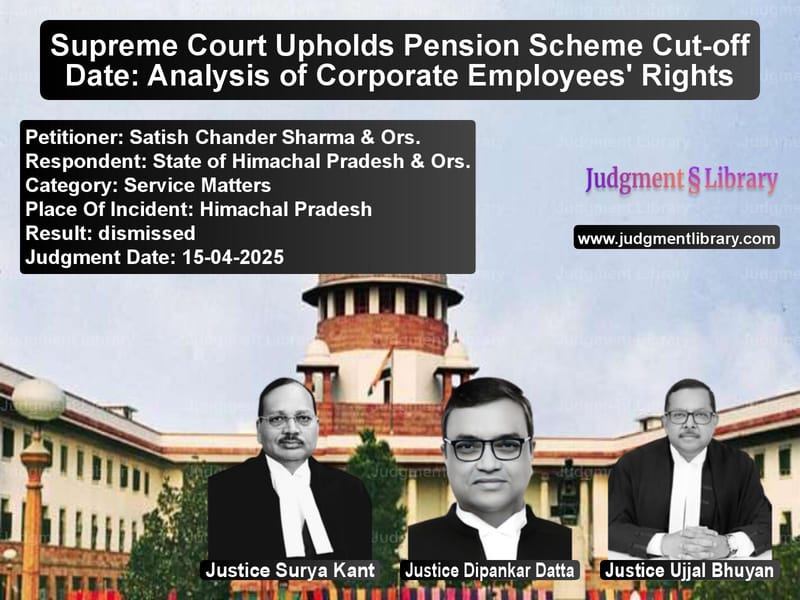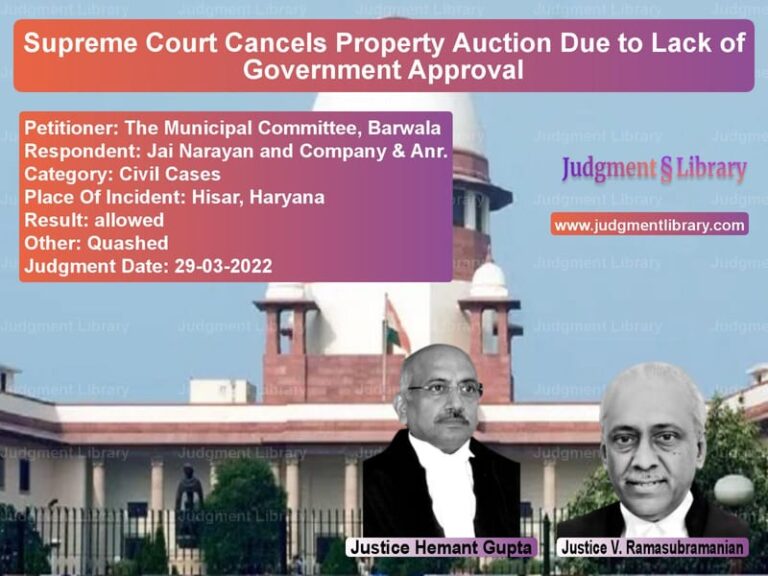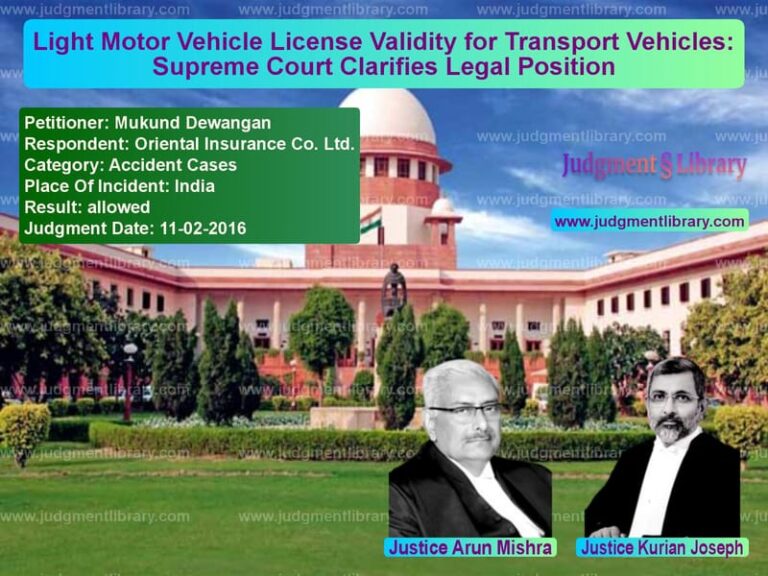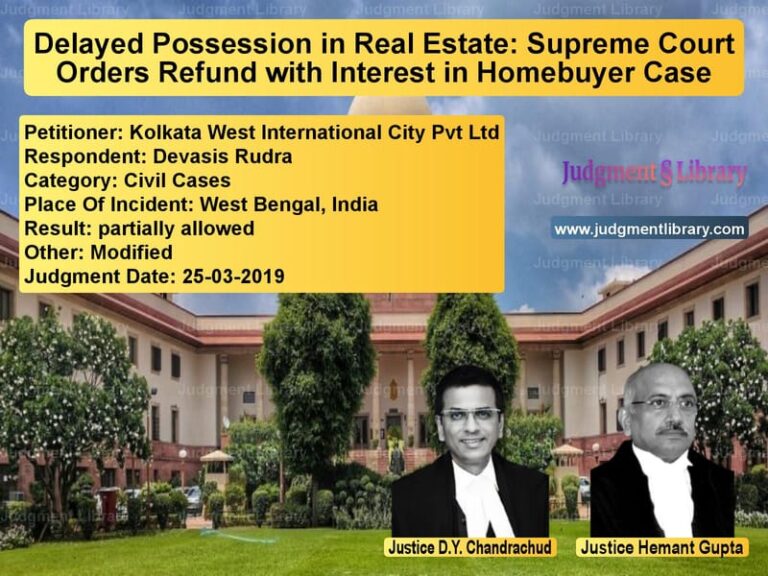Supreme Court Upholds Pension Scheme Cut-off Date: Analysis of Corporate Employees’ Rights
The Supreme Court of India recently delivered a significant judgment in Satish Chander Sharma & Ors. vs State of Himachal Pradesh & Ors., addressing the contentious issue of pension rights for retired employees of government corporations. The case centered around the Himachal Pradesh Corporate Sector Employees (Pension, Family Pension, Commutation of Pension and Gratuity) Scheme, 1999, and its subsequent repeal in 2004.
Background of the Case
The petitioners were retired officers of Himachal Pradesh State Forest Development Corporation Limited, a government-owned company. They challenged the denial of pensionary benefits under the 1999 Scheme, which was discontinued via notification dated 02.12.2004. While the scheme initially provided pension benefits to corporate sector employees at par with government employees, it was later repealed due to financial unviability, with benefits continuing only for those who had retired between 01.04.1999 and 02.12.2004.
Petitioners’ Arguments
Senior counsel Mr. Gopal Sankaranarayan argued:
“The judgment in Rajesh Chander Sood (supra) is not good law and is per incuriam as it fails to consider binding precedents of coordinate and larger benches of this Court.”
The petitioners contended that:
1. They had acquired vested rights under the 1999 Scheme by opting for it and forgoing their rights under the previous Employees’ Provident Fund Scheme
2. The cut-off date of 02.12.2004 arbitrarily divided a homogeneous class without reasonable nexus
3. The right to pension constitutes property under Article 300A of the Constitution
4. The State’s financial constraints couldn’t justify withdrawing accrued benefits
State’s Counter-Arguments
Senior counsel Mr. Devadatt Kamat for the State submitted:
“The present writ petition is nothing but a collateral challenge to a binding judgment of this Court in Rajesh Chander Sood (supra).”
The State maintained that:
1. The matter was already settled by the Court’s 2016 decision in Rajesh Chander Sood
2. The 1999 Scheme was introduced as a welfare measure, not a statutory obligation
3. Financial unviability justified its withdrawal after proper committee review
4. The cut-off date protected those who had already retired under the scheme
5. Corporate employees couldn’t claim parity with government employees
Supreme Court’s Analysis
The Bench comprising Justices Surya Kant, Dipankar Datta, and Ujjal Bhuyan upheld the State’s position, observing:
“We are of the view that the classification made by the State Government by fixing 02.12.2004 as the cut-off date was reasonable and justifiable in law; it also had a nexus to the object sought to be achieved.”
The Court emphasized several key principles:
1. Finality of Judgment: The Court rejected the attempt to challenge its earlier decision in Rajesh Chander Sood, stating:
“Law is well settled that a decision rendered by this Court… cannot be assailed directly or collaterally under Article 32.”
2. Financial Viability: The Court accepted the State’s financial constraints as valid grounds for policy change:
“The calculations projected at the behest of the State Government, to demonstrate the financial unviability of the Scheme, have not been disputed.”
3. Welfare vs Right: The Bench distinguished between welfare measures and statutory rights:
“The State Government, as a welfare measure, had ventured to honestly extend some post-retiral benefits… not in its capacity as the employer.”
Conclusion
The Supreme Court dismissed the writ petition, upholding:
1. The validity of the 2004 notification and its cut-off date
2. The State’s authority to modify welfare schemes based on financial considerations
3. The binding nature of its earlier decision in Rajesh Chander Sood
4. The distinction between government employees and corporate sector employees
The judgment reinforces the principle of finality in litigation while balancing welfare measures with fiscal responsibility. It clarifies that while pension rights are important, they must be viewed in the context of the employer’s financial capacity and the nature of employment.
Petitioner Name: Satish Chander Sharma & Ors..Respondent Name: State of Himachal Pradesh & Ors..Judgment By: Justice Surya Kant, Justice Dipankar Datta, Justice Ujjal Bhuyan.Place Of Incident: Himachal Pradesh.Judgment Date: 15-04-2025.Result: dismissed.
Don’t miss out on the full details! Download the complete judgment in PDF format below and gain valuable insights instantly!
Download Judgment: satish-chander-sharm-vs-state-of-himachal-pr-supreme-court-of-india-judgment-dated-15-04-2025.pdf
Directly Download Judgment: Directly download this Judgment
See all petitions in Pension and Gratuity
See all petitions in Public Sector Employees
See all petitions in Employment Disputes
See all petitions in Contractual Employment
See all petitions in Termination Cases
See all petitions in Judgment by Surya Kant
See all petitions in Judgment by Dipankar Datta
See all petitions in Judgment by Ujjal Bhuyan
See all petitions in dismissed
See all petitions in supreme court of India judgments April 2025
See all petitions in 2025 judgments
See all posts in Service Matters Category
See all allowed petitions in Service Matters Category
See all Dismissed petitions in Service Matters Category
See all partially allowed petitions in Service Matters Category







